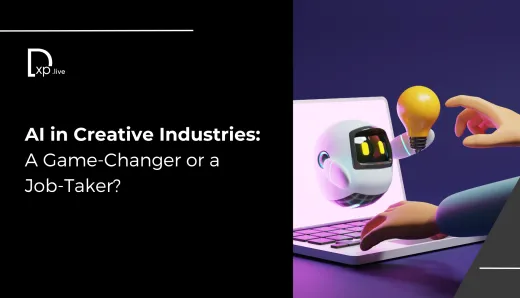Can Virtual Reality be a substitute for customer support
A decade ago, everyone believed in devices and sensors that would predict the occupancy and observe as well as enhance the settings accordingly. The recent activities in technology have shown new ways to interact with each other and across the globe. The internet of things has become a major part of our day to the daily life cycle. The opportunities for expanding these technologies beyond the customer domain to the organization are endless. This also consists of how companies are empowering service to their customers.
Operations Using VR Assistants
Gartner's recent report talks about how by 2020, 25% of customer service and support operations will incorporate virtual customer assistant/chatbot technology.
Gene Alvarez, managing VP at Gartner, said, “more than half of organizations have already invested in VCAs for customer service, as they realize the advantages of automated self-service, together with the ability to escalate to a human agent in complex situations.
As more customers engage on digital channels, VCAs are being implemented for handling customer requests on websites, mobile apps, consumer messaging apps, and social networks,"
A survey done in the year 2017 by Gartner showed that 84% of companies are expected to increase their investments in customer experience in the coming years. Gartner also reported many other predictions, such as:
- By 2019, brands will abandon their mobile apps up to 20%
- By 2022, two-thirds of all customer experience projects will make use of IT.
- By 2020, 30% of all B2B companies will employ artificial intelligence (AI) to augment at least one of their primary sales processes
- By 2020, more than 40 percent of all data analytics projects will relate to an aspect of customer experience.
- By 2020, augmented reality, virtual reality, and mixed reality immersive solutions will be evaluated and adopted in 20 percent of large enterprises as part of their digital transformation strategy.
Virtual Reality Replacing Today’s Reality
As virtual reality can become a substitute for reality in the future, in the present time only eyesight, hearing, and social interactions can only be replaced, but not taste, smell, touch, jobs, and education. VR does not have a complete capability to replace everything.
The objective of VR is to imitate or replace the actual reality. Social interactions at work, schools, and time with others are different right now. Once VR starts evolving and developing, the questions occur as, “could it be a substitute for our social interactions with friends, family, and colleagues”.
Capabilities of Virtual Reality
As companies are getting new opportunities to influence technologies to offer better and improved customer support experience. The data given by the customer can allow companies to tailor their services better and proactively serve them. Virtual reality is that one technology that will be a medium for customers to connect with the real world. Innovation in VR is increasing, and the cost of devices will be coming down in the coming years. This will help organizations to serve the customers better and as they want.
When we speak of VR technologies two come to the forefront in today’s age Facebook’s Oculus Rift and Microsoft’s HoloLens. Both offer unparalleled VR experience and a developer kit that can integrate itself well with both hardware and software in gaming and such. Even though both offer VR experience, their approaches are very different. While Oculus Rift immerses a person into a virtual environment, Microsoft’s Hololens approach is that of overlaying virtual elements in the real world (think AR). Although both the companies differ in their approach, this does open infinite possibilities for the future as games can get immersive like never before.
As the VR device needs to be cost-effective and widely available, the incorporation of VR technology into the business world has to be understood by the customers including learning to accept a new change as a medium of interaction for the services. VR has the ability for an exciting new experience by creating two different times in one phase. Several approaches will allow the domain to integrate with possible VR applications.
The Bottom Line
Many movies show that gaming is a major part of virtual reality. In very limited ways companies can simulate because the technology is not there yet, but as virtual reality will improve and help companies in customer support. The majority of the companies are looking forward to VR technologies that can be integrated into their practices and methods to empower the customer service experience. VR/AR can go beyond gaming, it can be the next social media hub with users meeting face-to-face in virtual reality and companies having their customer agents speak directly to customers and help them through AR. Possibilities are endless with only the imagination being the limit.



